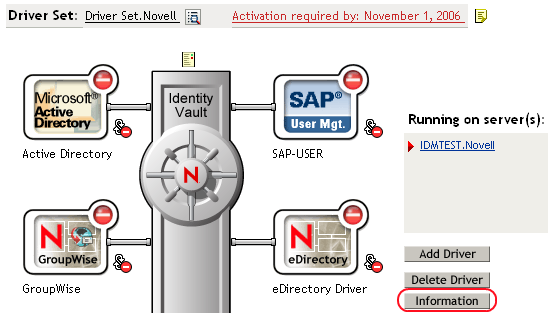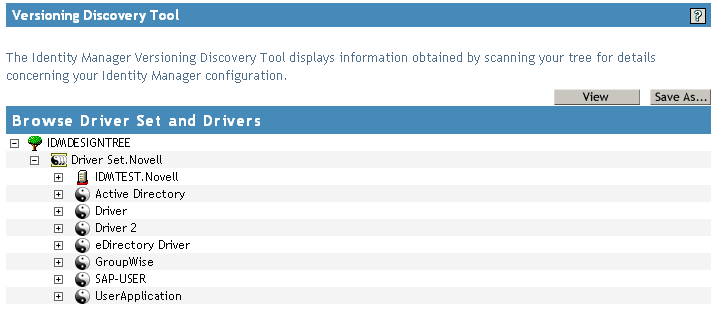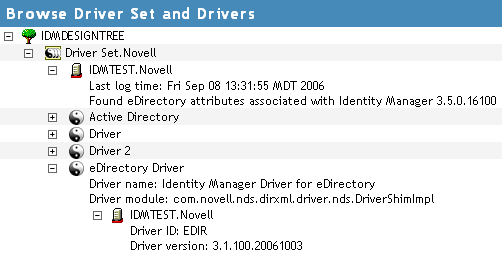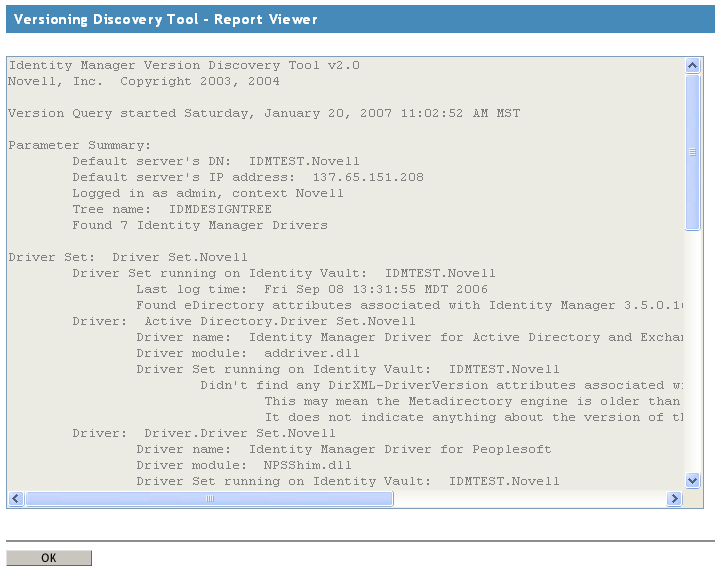7.4 Viewing Driver Version Information
The Versioning Discovery tool only exists in iManager.
7.4.1 Viewing a Hierarchical Display of Version Information
-
To find your Driver Set object in iManager, click , then click .
-
In the Identity Manager Overview, click

You can also select , browse to and select the Driver Set object, then click .
-
View a top-level or unexpanded display of versioning information.

The unexpanded hierarchical view displays the following:
-
The eDirectory™ tree that you are authenticated to
-
The Driver Set object that you selected
-
Servers that are associated with the Driver Set object
If the Driver Set object is associated with two or more servers, you can view Identity Manager information on each server.
-
Drivers
-
-
View version information related to servers by expanding the server icon.

The expanded view of a top-level server icon displays the following:
-
Last log time
-
Version of Identity Manager that is running on the server
-
-
View version information related to drivers by expanding the driver icon.

The expanded view of a top-level driver icon displays the following:
-
The driver name
-
The driver module (for example, com.novell.nds.dirxml.driver.delimitedtext.DelimitedTextDriver)
The expanded view of a server under a driver icon displays the following:
-
The driver ID
-
The version of the instance of the driver running on that server
-
7.4.2 Viewing the Version Information As a Text File
Identity Manager publishes version information to a file. You can view this information in text format. The textual representation is the same information contained in the hierarchical view.
-
To find your Driver Set object in iManager, click , then click
-
In the Identity Manager Overview, click .

You can also select , browse to and select the Driver Set object, then click .
-
In the Versioning Discovery Tool dialog box, click .

The information is displayed as a text file in the Report Viewer window.

7.4.3 Saving Version Information
You can save version information to a text file on your local or network drive.
-
To find the Driver Set object in iManager, click , then click .
-
In the Identity Manager Overview, click

You can also select , browse to and select the Driver Set object, then click .
-
In the Versioning Discovery Tool dialog box, click .

-
In the File Download dialog box, click .
-
Navigate to the desired directory, type a filename, then click .
Identity Manager saves the data to a text file.